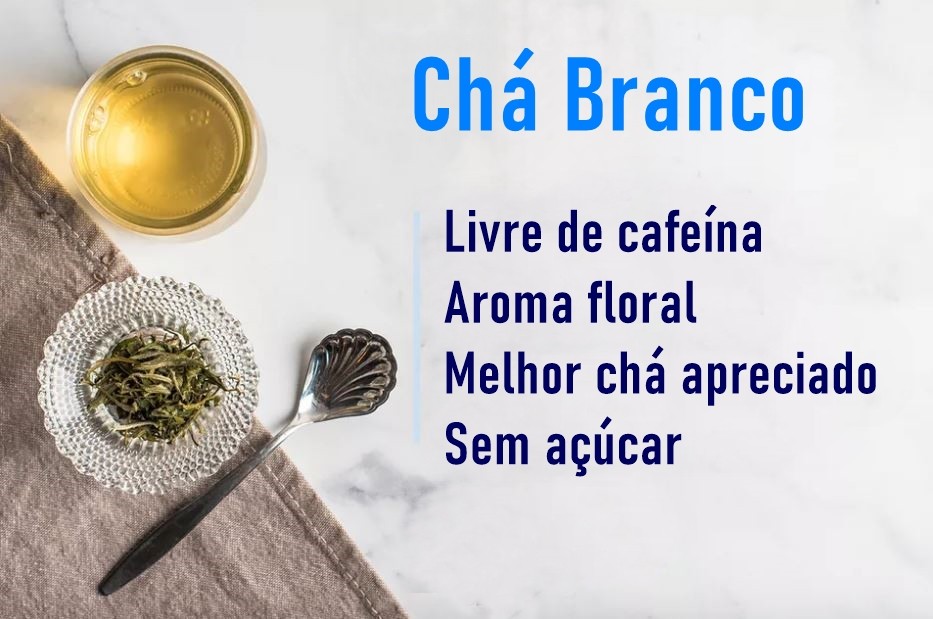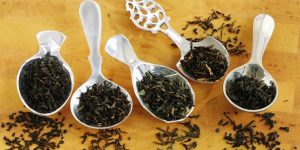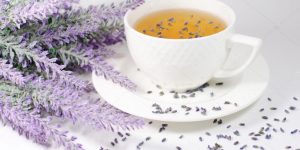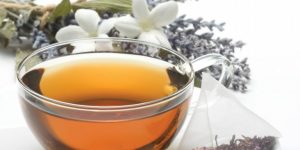
O White tea is a type of tea that has a delicate flavor and is naturally low in caffeine. It is harvested at the beginning of the season and is made up of buds and young leaves. O White tea It gets its name from a white fuzz on young leaves.
Which helps protect the new growth of the tea plant against insects. Because it is harvested manually for a short period each year, the White tea tends to be more expensive than other teas. It has many health benefits.
Quick Facts
Origin: Fujian Province, China
Temperature: 175-190°F
Caffeine: 6–75 mg per cup

What is white tea?
O White tea is composed of young spring tea leaves, traditionally grown in the Chinese province of Fujian. Dried tea is known for its small, withered leaves and buds that appear slightly fuzzy.
When fermented, it is typically light gold in color with a floral fragrance. Depending on the type of White tea, the flavor can vary from woody to sweet and floral with light fruity notes.
When prepared properly, it is generally less bitter and assertive than black tea. Almost all teas (black, green, white and oolong) come from the same species of plant: camellia sinensis or the tea plant.
The wide variety of properties exhibited by these types of teas is determined by where the plant is grown, when the tea is harvested, and how it is treated and dried after harvest. The leaves of White tea are traditionally harvested in Fujian.
After the leaves White tea are harvested, they are dried and dried immediately after harvest using natural sunlight, heat sources or drying chambers. This helps prevent oxidation.
Giving the tea a light flavor and color and preserving some of tea's most valued benefits, such as antioxidants. Furthermore, the characteristics of the tea may vary depending on the region of origin.
Benefits of White Tea:
O White tea has a long list of health benefits, rivaling green tea in your diet. Furthermore, some important benefits have attracted new scientific studies.
Boosting the immune system
Studies have shown that consuming White tea can give your immune system a real boost. Tea has the ability to kill viruses and bacteria that cause diseases in the body, such as Streptococcus infections and pneumonia. ))
Reduced risk of colon cancer
O White tea may help protect you against colon cancer. In studies, mice genetically predisposed to colon cancer received it. Additionally, these mice developed fewer colon polyps than mice given a regular drug.
Reduce cholesterol and blood pressure
How the White tea is the least processed type of tea, many of the natural benefits of tea are better preserved. Additionally, tea polyphenols (especially abundant in most white teas) are known to help reduce high blood pressure and cholesterol.
Uses of white tea
O White tea é normalmente consumido fresco e quente. Por causa de seu sabor sutil, adoçantes e leite normalmente não são adicionados. Além disso, muitas vezes é servido sozinho ou com um lanche leve. Uma pausa para o chá da manhã ou da tarde é a maneira perfeita de apreciar plenamente este delicado chá quente.((https://www.sciencedirect.com/science/article/pii/S0308814614010280?via%3Dihub))
How to drink white tea
O White tea It must be prepared at a relatively low temperature to maintain the freshness characteristics of the tea. Use clean, pure water (not distilled) that is not yet boiling, ideally 100º.
Note that water boils at 212 F, so the water should be hot but not completely boiling. Additionally, most white teas need to steep for at least one minute or up to five minutes.
Some varieties become astringent and bitter if left to steep for too long or if brewed in very hot water.
The amount of tea needed will depend on the leaves – if the mixture is made up of compact buds. Just one teaspoon for an 8-ounce cup will suffice.
If the tea is made from light, open leaves, use about a tablespoon per cup. Also, taste the tea before adding sugar or other ingredients – it probably won't be necessary.

Caffeine content in white tea
The caffeine content in White tea may vary depending on its origin. Most traditional Fujian teas are low in caffeine. Also, prepared at the appropriately low temperature for a short period of time.
One cup can contain at least six milligrams of caffeine (compared to the 80 to 200 milligrams in a cup of coffee). Furthermore, because of the tea's lack of oxidation, short infusion time, and low caffeine content.
It also has lower acidity compared to black tea and the coffee. A bit of White tea is being cultivated and harvested in Darjeeling. India and other tea producing regions around the world.
This tea can be quite different from its traditional counterpart, and some white teas harvested outside of China have been shown to have higher levels of caffeine. Additionally, these teas can sometimes have a similar caffeine level to green tea and even black tea.
Buying and storing
O White tea can be found sold as whole tea leaves. Tea bags and occasionally as bottled iced tea. Additionally, single origin teas are available as well as blends.
The highest quality tea tends to come in whole leaf form. Save the White tea in an airtight container, in a cool, dry place, protected from light. Unflavored tea leaves should remain high quality for a year or two under these conditions.
Flavored teas (White tea with added ingredients such as citrus fruits or vanilla) last from six months to a year. Additionally, the tea will not spoil after this period of time, but it will begin to lose some of its flavor and stale taste.
Types of white tea
There are a few main varieties available for purchase in stores and online marketplaces. Silver needle is the White tea Most valued for its pure flavor, floral aroma and golden color.
White peony is another premium tea that has a sweet, nutty flavor. Additionally, it is often sold as a single origin and used in blends. The color, once impregnated, is slightly deeper than the silver needle.
O White tea picked by monkeys was supposedly once picked by monkeys. But now the name simply means high-quality young tea harvested at its peak.
Other varieties can sometimes be found, such as White tea Darjeeling (grown in India, with very different characteristics) and “eyebrow” white teas, which are harvested later and are therefore of slightly lower quality.((https://academic.oup.com/carcin/article /24/2/263/2608385))












